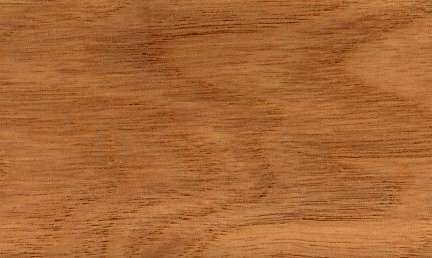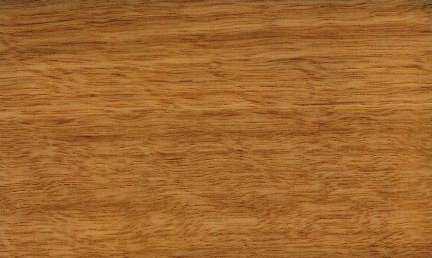   
Persimmon (Dios pyros virginiana )
Family: Ebenaceae
Common names: American ebony, Bara-bara, Boa-wood, Butterwood, Common persimmon, Cylil date plum, Persimmon, Possum wood, Virginia date palm, White ebony
Distributed in: United States (North America)
Distribution overview: Common persimmon is distributed from southern Connecticut and Long Island, New York to southern Florida.Inland it occurs in central Pennsylvania, southern Ohio, southern Indiana, and central Illinois to southeastern Iowa; and southeastern Kansas and Oklahoma to the Valley of the Colorado River in Texas.It does not grow in the main range of the Appalachian Mountains, nor in much of the oak-hickory forest type of the Allegheny Plateau. Scattered throughout most forest types, but particularly abundant on roadsides, pastures, and old fields.
Common uses: Bedroom suites, Boat building, Building construction, Building materials, Cabin construction, Cabinetmaking, Canoes, Chairs, Chests, Concealed parts (Furniture), Construction, Desks, Dining-room furniture, Domestic flooring, Dowell pins, Dowells, Drawer sides, Drum sticks, Excelsior, Factory construction, Factory flooring, Fine furniture, Floor lamps, Flooring, Furniture , Furniture components, Furniture squares or stock, Hatracks, Heavy construction, Joinery, Kitchen cabinets, Lifeboats, Living-room suites, Mine timbers, Musical instruments , Office furniture, Organ pipes, Parquet flooring, Piano keys, Pianos , Shipbuilding
Product sources: Common persimmon is rather scarce in veneer form. Supplies in lumber form are also limited, and the material is rather costly when available.
Environment profile: Status unknown due to inadequate information
Tree size: Sapwood width is 5-10 cm
Colors: the heart isRed, Small heartwoodand the sapwoodWide, Yellow.The grain isStraight, the textureFine
Natural durability: Sapwood susceptible to attack by powder post beetles, Susceptible to insect attack
Odor: No specific smell or taste
Kiln Schedules: T6 - C3 (4/4) T3 - C2 (8/4) US
Drying Defects: Splitting, Surface checks
Ease of Drying: Moderately Difficult to Difficult
Comments: Almost all the persimmon used commercially is reported to consist of sapwood. The heartwood is used mainly for veneer and specialty items. The properties of Persimmon makes it an ideal material for two specific types of applications: golf club heads and textile shuttles. Persimmon shuttles are very hardy and can withstand up to 1000 hours of use without wear or cracking. The wood is used for heads of driver golf clubs because of its hardiness and outstanding resistance to shock. Light & Air-Induced Changes - The creamy white sapwood changes color upon exposure
Blunting Effect: Moderate
Gluing: Easy to glue
Nailing: Holds nails well, Possible if prebored
Planing: Special attention required
Persimmon requires sharp cutters and reduced cutting angles to yield very smooth surfaces in planing
Resistance to Impregnation: Permeable sapwood
Response to hand tools: Moderate blunting effect on cutting edges
Sanding: Very Good to Excellent Results
Steam bending: Moderate
Screwing: Possible if prebored
; Turning: Special attention required
Polishing: Excellent;
- Numerical data Metric
- Numerical data English
- Strength properties
- References
 |
 |
 |
 |
| Item |
Green |
Dry |
Metric |
| Specific Gravity |
0,6 |
0,66 |
|
| Density |
|
817 |
kg/m3 |
| Bending Strength |
723 |
1281 |
kg/cm2 |
| Crushing Strength |
298 |
655 |
kg/cm2 |
| Hardness |
|
1022 |
kg |
| Impact Strength |
|
|
cm |
| Shearing Strength |
|
148 |
kg/cm2 |
| Stiffness |
88 |
129 |
1000 kg/cm2 |
| Tangential Shrinkage |
11 |
|
% |
| Radial Shrinkage |
8 |
|
% |
| Weight |
961 |
801 |
kg/m3 |
| Maximum Load |
0,91 |
1,05 |
cm-kg/cm3 |
| Toughness |
|
|
cm-kg |
| Static Bending |
|
|
kg/cm2 |
|
 |  |  |  | | Item | Green | Dry | English | | Bending Strength | 10290 | 18228 | psi | | Density | | 51 | lbs/ft3 | | Hardness | | 2254 | lbs | | Maximum Crushing Strength | 4243 | 9330 | psi | | Shearing Strength | | 2117 | psi | | Stiffness | 1254 | 1842 | 1000 psi | | Work to Maximum Load | 13 | 15 | inch-lbs/in3 | | Specific Gravity | 0.6 | 0.66 | | | Weight | 60 | 50 | lbs/ft3 | | Radial Shrinkage | 8 | | % | | Tangential Shrinkage | 11 | | % | | Volumetric Shrinkage | 19 | | % | |
Resists denting and marring
Max. crushing strength = very high
Heavy
The bending strength qualities of this species in the air-dry condition is very high, far superior to those of Mahogany. Compression strength parallel to grain, or maximum crushing strength, is very high - higher than in Teak or Hard maple. It is hard - harder than Teak, and does not marr or dent easily. The weight is very high. The wood is very dense
American Walnut Manufactures Association (AWMA). 1987. Fine Hardwoods Selectorama: A Guide to the Selection and Use of the World's Most Popular Species. Published by AWMA, 5603 West Raymond Street, Suite O, Indianapolis, Indiana in Co-operation with Fine Hardwood Veneer Association.Bodig, J. and B. A. Jayne. 1982. Mechanics of Wood and Wood Composites. Van Nostrand Reinhold Company, New York.Boone, R.S., Kozlik, C.J., Bois, P.J., Wengert, E.M. 1988. Dry Kiln Schedules for Commercial Woods: Temperate and Tropical. USDA, Forest Service, Forest Products Laboratory, General Technical Report FPL-GTR-57, Madison, Wisconsin.Constantine, Jr., A.J. 1975. Know your Woods: A Complete Guide to Trees, Woods, and Veneers. Revised Edition. Revised by H.J. Hobbs. Charles Scribner and Sons, New York.HMSO. 1981. Handbook of Hardwoods, 2nd Edition. Revised by R.H. Farmer, Department of the Environment, Building Research Establishment, Princes Risborough Laboratory, Princes Risborough, Aylesbury, Buckinghamshire.Kaiser, J. 1993. Wood of the Month - Persimmon:The Ebony of America.Wood and Wood Products, December, 1993, Page 46.Kline, M. 1979. Diospyros virginiana - Common persimmon. In A Guide to Useful Woods of the World, Flynn Jr., J.H., Editor. King Philip Publishing Co., Portland, Maine. Page 141-142.Lincoln, W.A. 1986. World Woods in Color. Linden Publishing Co., Fresno, California.Little, E.L.1980.The Audubon Society Field Guide to North American Trees - Eastern Region.Published by Arthur A. Knopf, New York.Panshin, A.J. and C. deZeeuw. 1980. Textbook of Wood Technology, 4th Edition. McGraw-Hill Series in Forest Resources, McGraw-Hill Book Company, New York.
|











